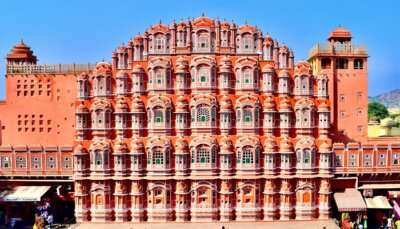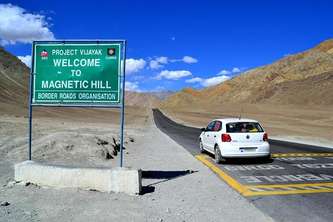Exploring The Magnificent Tomb Of Seti 1 A Journey Into Ancient Egypt

The Tomb of Seti 1 is one of the most amazing archaeological sites in Egypt’s Valley of the Kings. It was carved deep into the rocky valley during the reign of Pharaoh Seti I in the 19th Dynasty (around 1290 BCE). This underground tomb is famous for its excellent preservation and beautiful wall and ceilings decorations. The tomb gives an awe-inspiring look into ancient Egyptian beliefs and incredible artistic achievements from over 3,300 years ago with detailed hieroglyphic inscriptions and colourful relief scenes showing the pharaoh’s journey into the afterlife.
About Tomb Of Seti 1

The Tomb of Seti I, also called KV17, is an important archaeological site in Egypt’s Valley of the Kings. It is the final resting place of Pharaoh Seti I from the Nineteenth Dynasty. The tomb was discovered by Italian explorer Giovanni Battista Belzoni on October 16, 1817, and is known for its detailed and intricate decorations.
Pharaoh Seti I commissioned the tomb during his reign (around 1290–1279 BCE), and it is unique for its “joggled axis” architectural style. The walls are covered with detailed reliefs showing scenes from the Egyptian Book of the Dead, religious rituals, and offerings to gods. Unfortunately, the tomb is usually closed to the public because of preservation concerns. Still, it remains a fascinating example of ancient Egyptian art and beliefs.
Must Read: Waterfall In Egypt
Tomb Of Seti 1 History

The Tomb of Seti I, also known as KV17, is in Egypt’s Valley of the Kings. It stands out as one of the valley’s most ornate and deepest tombs. The Italian archaeologist Giovanni Battista Belzoni discovered it on October 16, 1817. Seti I, the tomb’s namesake, was the second pharaoh of the Nineteenth Dynasty and the progenitor of Ramesses II. Until the Tomb of the Sons of Ramesses II was discovered, Seti I’s tomb was the longest in the valley. Almost all of its seventeen chambers and side rooms, except two, are adorned with well-preserved reliefs.
Marvel At The Architecture And Design

The final resting place of Seti I, also known as KV17, is nestled in the Valley of the Kings in Egypt and stands out for its extensive decorations. Unearthed by Giovanni Battista Belzoni, an Italian archaeologist, on October 16, 1817, the tomb is renowned for its ‘joggled axis’ design. This design is marked by a descending line at the tomb’s entrance interrupted by a ‘wiggle’, changing to a steeper descent upon entering the tomb after the first chamber. The tomb has four corridors (A–D), each leading deeper underground, adorned with murals showing traditional religious imagery and depictions of Seti I before Ra. Further inside, rooms F, Fa, J, Jb, Jc, and Jd have intricately carved support pillars with well-preserved decorations. It is also among the earliest discovered tombs to have a vaulted burial chamber.
A standout feature of the tomb is its astronomical ceiling, which portrays constellations as figures and animals. This is seen as a high point of New Kingdom tomb art. Portions of the tomb ceilings are adorned with gold stars against a deep blue sky, a recurring motif in Egyptian temples and tombs. The tomb is still under excavation, particularly Corridor K, which extends into the mountainside from beneath the location where the sarcophagus was placed in the burial chamber.
Suggested Read: Egypt In December
Opening Hours And Entrance Fees

The tomb of Seti 1 tunnel welcomes visitors from 6:00 am to 6:00 pm. The admission fee for foreigners is EGP 1400, equivalent to around USD 45. This charge is separate and surpasses the entry cost for the Valley of the Kings. Despite the high cost, many tourists find the experience of delving into this richly adorned tomb with its extensive passageways worthwhile.
Best Time To Visit

The Tomb of Seti I tunnel is open to visitors from 6:00 am to 6:00 pm. The entry fee for foreigners is EGP 1400, which is about USD 45. This fee is separate from the Valley of the Kings entry cost. Even though it’s pricey, many tourists believe exploring this beautifully decorated tomb and its long passageways is well worth it.
Suggested Read: 4400 Year Old Tomb In Egypt Discovered
How To Reach

The Tomb of Seti I, a must-visit attraction, is conveniently located in the Valley of the Kings on the west bank of the Nile River, opposite Luxor, Egypt. Here’s how to reach it:
By Plane: Luxor International Airport (LXR) is the closest airport to the Valley of the Kings. It is about 30 minutes away and can be reached by taxi or hire car.
By Train: Luxor also has a train station. You can take a taxi or hire a car from the Station to the Valley of the Kings.
By Car: If you are driving from Luxor, take the Corniche El Nile Road south until you reach the turnoff for the Valley of the Kings. There are signs for the Valley of the Kings along the way.
Further Read: Hiking In Egypt
Are you inspired to unravel the mysteries of ancient Egypt? Book your trip to Egypt today and experience the magic firsthand. From the awe-inspiring pyramids to the enigmatic Valley of the Kings, an Egyptian adventure awaits, filled with wonders that have captivated travellers for centuries. Unlock the secrets of this fascinating civilization and Tomb of Seti 1, and plan your trip now!
For our editorial codes of conduct and copyright disclaimer, please click here.
Cover Image Credit: Theban Mapping Project for Wikimedia Commons
Frequently Asked Questions About Tomb Of Seti 1
Is Seti 1 tomb worth it?
Yes, The Tomb of Seti I, located in the Valley of the Kings, is considered one of the top tombs to explore. Although the entry fee is steep (1,400 EGP or USD $45 at the time of writing), its awe-inspiring chambers, well-preserved paintings, and mysterious atmosphere make it a worthwhile experience.
What was found in the Seti 1 tomb?
The tomb features exquisite reliefs, colourful paintings, and an intricately carved column depicting Seti I with the goddess Hathor. Archaeologists also found clay vessels, fragments of the tomb’s painted wall reliefs, and a quartzite ushabti figure — a funerary statue.
Was Seti's tomb robbed?
Yes, like many tombs in the Valley of the Kings, Seti I’s tomb was robbed in ancient times. His mummy was later found in the Deir el-Bahri royal cache. The damage to his alabaster sarcophagus suggested that the tomb had been disturbed by thieves.
Who was Seti's son?
Seti I’s son was Ramesses II, also known as Ramesses the Great, who succeeded him and became one of Egypt’s most famous pharaohs.
How was Seti 1 preserved?
Seti I’s mummy was remarkably well-preserved using advanced mummification techniques of the time. Embalmers used natron to dehydrate the body and applied resins to prevent decomposition. The internal organs were removed, treated, and placed in canopic jars.
People Also Read:
Things To Do In Egypt Things To Do In Cairo Things To Do In Marsa Alam

Unveil the hidden treasures of the globe and turn every travel dream into reality. As a Content Writer, I am passionate enough to craft stories from ancient wonders to modern marvels. My words paint the picture-perfect itinerary for unforgettable experiences. Let my words be your trusted guide to immerse in the diverse culture and discover the beauty of the unknown.











